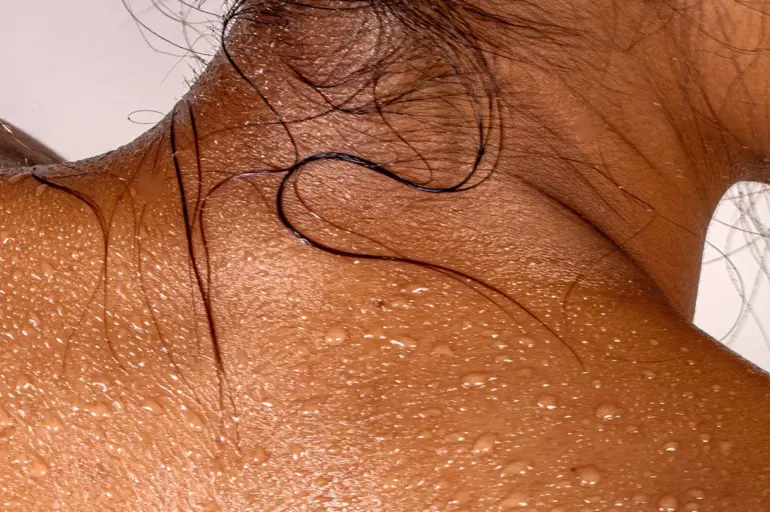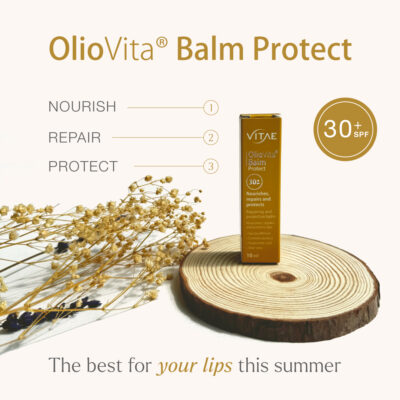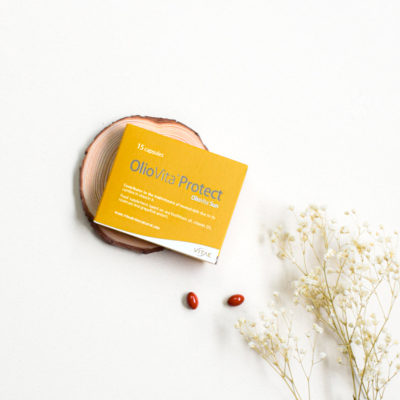Sun allergy is an increasingly common reaction that affects the skin after exposure to solar radiation, especially in spring and summer. Many people confuse it with a simple sunburn, but it may indicate a more complex condition worth understanding. If you’ve ever experienced redness, itching, or discomfort after being in the sun, you might be facing this type of reaction.
In this article, we explain what sun allergy is, its main symptoms, and how to protect yourself, including natural products that help care for your skin effectively. Curious to know more? Keep reading to discover how to protect your skin from the sun in a natural and safe way.
What Is Sun Allergy and How Does It Appear on the Skin
Sun allergy is an abnormal skin reaction that occurs after exposure to sunlight. It usually presents as redness, itching, inflammation, or small bumps, especially in areas like the chest, arms, or shoulders, and often appears 30 minutes to two hours after sun exposure.
The most common form is polymorphic light eruption, which typically occurs in spring and among people with fair skin. Other variants exist, such as solar urticaria, which causes hives shortly after exposure. In some cases, sun allergy can also be triggered by photosensitizing cosmetics or medications.
Types of Sun Allergy and Their Symptoms
There are different types of sun allergy, each with specific characteristics. While they all fall under the category of sun-induced dermatitis, they vary in symptoms, duration, and severity. Here’s a comparison table:
| Type of Sun Allergy | Main Symptoms | Duration | Severity |
|---|---|---|---|
| Polymorphic light eruption | Sun-induced bumps, itching, redness | Days to a week | Mild to moderate |
| Solar urticaria | Immediate hives, burning sensation | Minutes to a few hours | Moderate to severe |
| Photoallergy | Rash, flaking, inflammation | Days (may worsen) | Moderate |
| Phototoxic reaction | Redness, blisters | Several days (like burn) | Moderate to severe |
Polymorphic Light Eruption
The most common sun allergy. Presents as small sun-induced bumps, itching, and redness, mostly in young women with fair skin and typically in spring. Symptoms improve with sun avoidance and soothing skincare.
Solar Urticaria
Less common but more intense. Causes painful hives shortly after exposure, often on the face, neck, and arms. The reaction appears quickly and usually disappears within hours, but tends to recur.
Photoallergy
Triggered by photosensitizing substances (cosmetics or medications). The skin reacts to sunlight as if allergic to the product, resulting in rash, inflammation, and sometimes flaking. Appears hours after exposure.
Phototoxic Reaction
Not a true allergy, but a skin reaction caused when certain substances on the skin become harmful under sun exposure. Symptoms resemble a burn: redness, pain, and sometimes blisters.
Causes of Sun Allergy: Why It Happens
Sun allergy causes can vary widely. Some common triggers include:
-
Genetic predisposition: Fair-skinned individuals or those with a family history are more prone.
-
Photosensitive medications: Antibiotics (like tetracyclines), anti-inflammatories (ibuprofen, ketoprofen), or contraceptives can trigger photoallergic reactions.
-
Cosmetics and perfumes: Ingredients like alcohol, citrus oils, or certain preservatives may cause phototoxic responses.
-
Autoimmune or dermatologic conditions: Lupus, rosacea, or eczema can increase sun sensitivity.
-
Sudden or prolonged sun exposure: Skin may react defensively after long periods without sun, like early summer.
-
Age and hormonal changes: Young skin or those undergoing hormonal shifts (pregnancy, menopause) are more reactive.
How to Know If You Have a Sun Allergy
It’s easy to confuse a sun allergy with sunburn or irritation, but some key signs can help you identify it:
-
Bumps, rashes, or hives shortly after sun exposure.
-
Intense itching or burning in exposed areas.
-
Repeated symptoms every time you’re in the sun.
-
Rash in typically covered areas.
-
Recent use of medication or cosmetic products.
-
Symptoms last for days or worsen over time.
If you check several of these boxes, it’s best to consult a dermatologist for proper diagnosis and treatment.
What to Do If You Have a Sun Allergy: Tips and Prevention
While sun allergy can’t always be fully cured, it can be managed. Here are 7 tips for preventing and reducing symptoms:
-
Avoid peak sun hours (12:00 to 16:00).
-
Use protective clothing, wide-brimmed hats, and UV-filter sunglasses.
-
Apply broad-spectrum sunscreen (SPF 50+) every two hours.
-
Hydrate and use calming products (like aloe vera or calendula).
-
Consult your doctor about any medications you’re taking.
-
Avoid perfumes and alcohol-based or citrusy cosmetics.
-
Include antioxidants (vitamin C, beta-carotene, coenzyme Q10) in your routine.
Beach and Outdoor Tips for Photosensitive Skin
Plan outdoor time during early morning or evening. Stay in the shade, hydrate, and reapply sunscreen after swimming. If you feel itching, redness, or rash starting, leave the sun immediately and apply a soothing cream. If symptoms persist, see a dermatologist.
OlioVita Protect: Natural Oral Photoprotection for Sun Allergy
Beyond topical creams, more dermatologists now recommend oral photoprotection for sun allergy. These supplements support skin from within, helping to prevent redness, bumps, and itching.
OlioVita Protect is a natural supplement rich in antioxidants and skin-protective compounds from plant-based sources.
Key benefits include:
-
Deep hydration through essential fatty acids.
-
Antioxidant protection against UV-induced oxidative stress.
-
Immune support for sensitive skin.
-
Complements — not replaces — topical sunscreen for complete protection.
Ideal for those with photosensitive skin or prior sun-related skin issues, especially ahead of vacations or prolonged sun exposure.
Frequently Asked Questions About Sun Allergy
How long does sun allergy last?
Symptoms may appear 30 minutes to several hours post-exposure and typically last 1 to 5 days, depending on severity and treatment.
Can I sunbathe if I have sun allergy?
Yes, with care. Avoid peak sun hours, wear protective clothing, use physical sunscreen, and take oral photoprotection. Limit sun exposure gradually.
Does sun allergy go away over time?
In some cases, gradual exposure helps the skin adapt. Others may have chronic symptoms and need ongoing protection.
For additional concerns, a dermatologist can help tailor the best prevention or treatment plan for your skin.
Conclusion: How to Enjoy the Sun Without Fear of Allergy
Having photosensitive skin doesn’t mean giving up summer. With the right diagnosis, proper topical care, and natural oral protection like OlioVita Protect, you can enjoy the sun safely.
The key is prevention: avoid peak UV hours, hydrate daily, check your skincare ingredients, and support your skin’s natural barrier with antioxidants.
This summer, give your skin the care it needs—and feel free under the sun.






